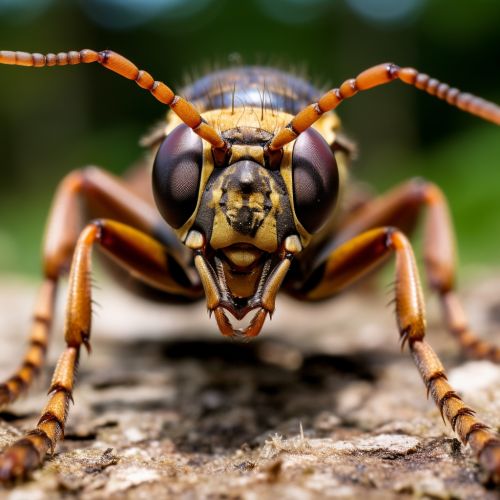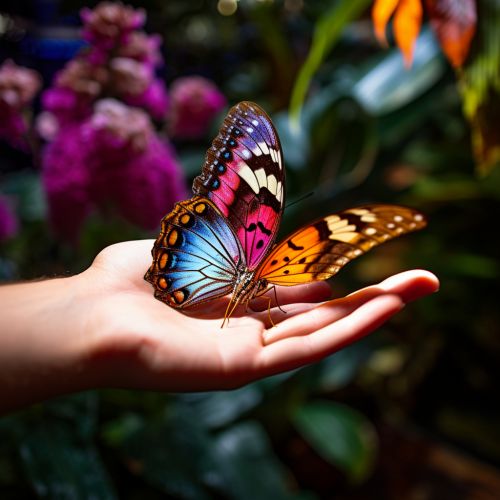Insecta
Taxonomy and Evolution
Insects, belonging to the class Insecta, are the most diverse group of animals on Earth, with over a million described species. This accounts for more than half of all known living organisms. The study of insects is known as Entomology, a branch of zoology.
Insects evolved from a group of crustaceans. The first insects were land bound, but some insects, such as mayflies, dragonflies, and caddisflies, returned to the water. Some insects, like bees, ants, and termites, have social structures where they care for their young and have a division of labor.


Anatomy and Morphology
Insects possess segmented bodies supported by an exoskeleton, a hard outer covering made mostly of chitin. The body is divided into three sections: the head, the thorax, and the abdomen. The head supports a pair of sensory antennae, a pair of compound eyes, and three sets of variously modified appendages that form the mouthparts. The thorax has three pairs of jointed legs and usually one to two pairs of wings. The abdomen has eleven segments, though in a few species of insects, these segments may be fused together or reduced in size. The abdomen also contains most of the digestive, respiratory, and excretory organs.
Life Cycle
Insects undergo a series of metamorphoses during their life cycle. The stages of the life cycle of an insect are egg, larva, pupa, and adult. Some insects may also have a subimago stage before becoming fully mature. This process is known as Metamorphosis.
Behavior and Ecology
Insects play crucial roles in various ecosystems. They are important as pollinators, decomposers, and as a part of the food chain. Many insects are parasitic and prey on other animals or plants. Some insects have a symbiotic relationship with other organisms.
Insects have various methods for communicating including through pheromones, sounds, and visual signals. Some insects also have advanced methods of defense including camouflage, mimicry, and physical defenses such as stinging or biting.
Insects and Humans
Insects have various interactions with humans. They can be pests, damaging crops and spreading diseases. However, they also have beneficial roles, such as in pollination of crops, production of honey, silk, wax and other products, and in controlling pests. Insects also have cultural significance in many societies, being present in literature, music, film, and folklore.


